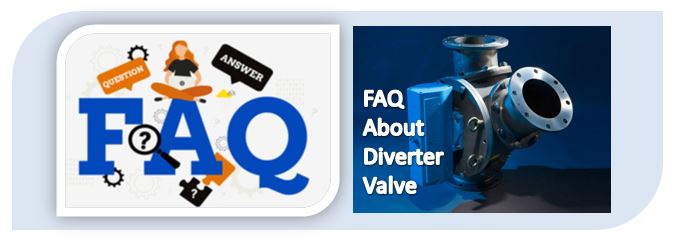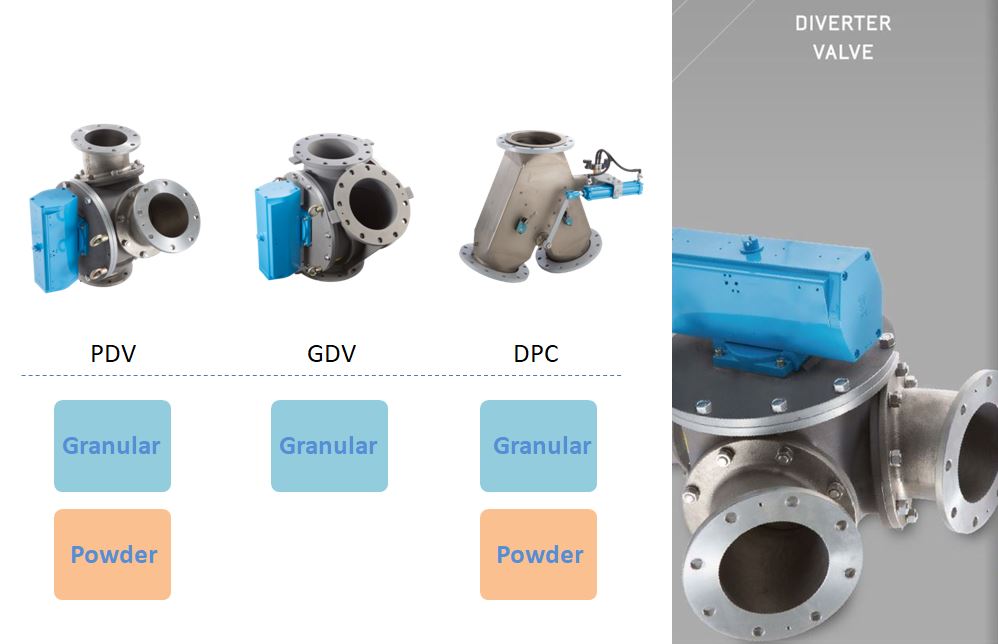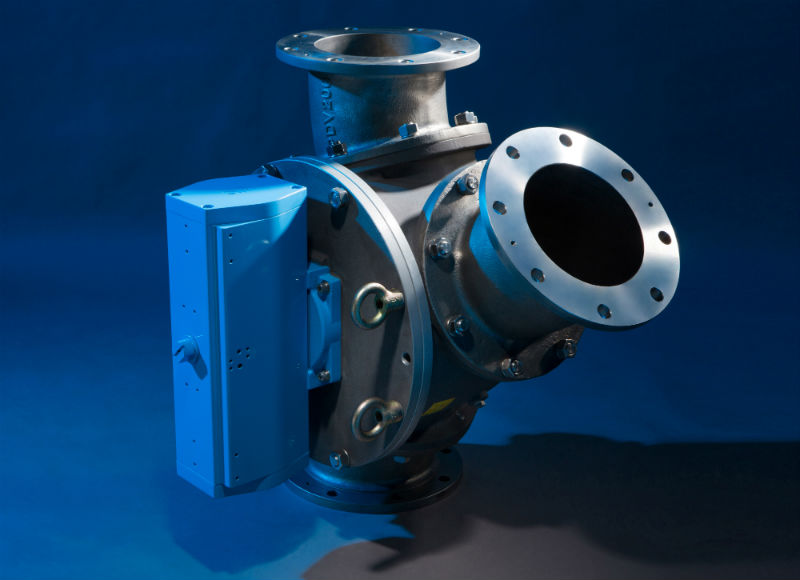Home » FAQ about Diverter Valve
Q&A-Diverter Valve

Most diverter valves, also called two-way diverter valves, convey material from one source to two destinations. In some applications, a two-way diverter valve is installed backward in the line to convey material from two sources to one destination. When used this way, it’s called a two-way converger valve. However, be aware that turning a conventional two-way diverter valve into a converger valve may require the manufacturer to make costly design modifications that will increase the valve’s purchase price. It may be more practical to select a valve specifically designed for converging.
Before you can select a diverter valve for your pneumatic conveying system, you need to consider several factors: your application type, your conveying system type, your material characteristics, valve cost, and valve options.
A diverter valve is used to divert material from one source to different destinations in a pneumatic conveying system or a gravity pipe. Pellets, granules or fine powders passing through the diverter valve cause wear along the valve’s passage, especially with abrasive products as used in the mineral and cement industries. Examples are raw meal, lime, fly ash, bypass dust, clinker, cement, petcoke and lignite to name a few. Diverter valves that have been designed with main wear factors in mind make it possible to convey even highly abrasive powder bulk materials economically and reliably. They also enjoy a long service life and are easy to maintain.
The plug type diverter valves are designed to route virtually any material, including those with a tendency to plug, within a pneumatic conveying system. The plug type diverter valve can be used in both the diverging and converging modes. The valve may be used in positive conveying systems up to 1 barg and also vacuum conveying systems. The plug type diverter valves are suitable for use within dense phase conveying systems when fitted with seals between the plug and valve housing.
 Taiwan Control Valve offers :
Taiwan Control Valve offers :
the GDV for granular application,
PDV for powder and granular application,
DPC for gravity feeding both in powder and granular applications.
The main difference is the conveying material, PDV is used for powder and pellet and the GDV is used for granule. Also PDV features with the coupling flange that is separately and independently designed. It can be adjusted to different angles according to the requirement of pipeline system. And both the GDV and PDV can be used in both positive and negative pressure pneumatic conveying lines.

Features a tunnel that rotates 45° port to port which prevents contamination and 2-way switching capability for either dilute or dense phase conveying applications.

Diverter valve is applied in the chemical, pharmaceutical, plastic, food, agriculture minerals, textiles and other related industries.

Yes, our diverter valve is easy to have maintenance. The valve forged as one complete piece with few parts installed, providing easy maintenance, and also features with modularized design on standard accessories allows easy maintenance and replacement. And either PDV or GDV are both pneumatic operated diverter valves.
